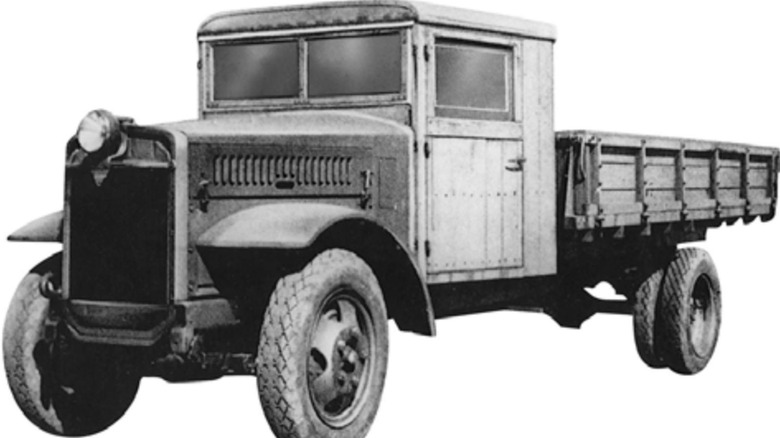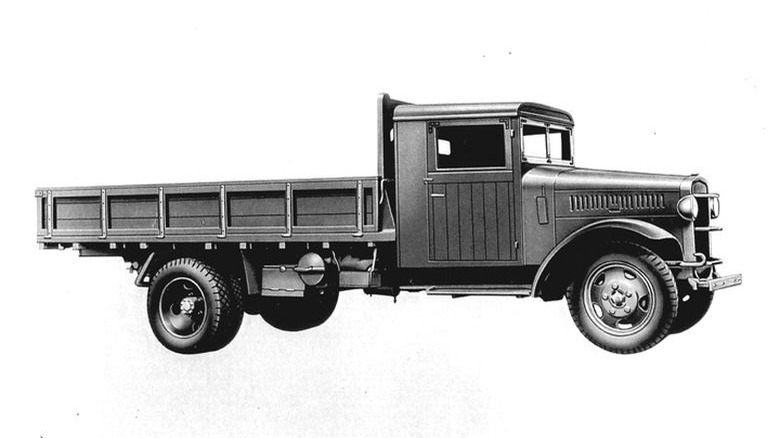Why Did Some Old Toyota Trucks Have Only One Headlight?
It's a given that every automobile rolling down the highways and byways of the world has two headlights. With today's matrix LED headlight technology, however, it's getting harder to tell exactly what a headlight is. And yes, motorcycles have just one, but even those particular modes of transportation can have a baffling array of front lights. So let's keep this simple: cars have two headlights. But back during World War II, there was a time when some only sported one.
In July 1943, Japan's Automobile Technology Committee (ATC) settled on new specifications for a truck to be used during wartime. Between November 1943 and March 1947, Toyota made its Model KC Truck with just one headlight due to the shortage of raw materials that were globally diverted to respective war efforts. This was done in order to build airplanes, tanks, ships, and other military-type vehicles and was by no means just a Japanese phenomenon; it was something all countries participating in the war were forced to do.
In fact, all private automobile manufacturing in the United States ground to a halt when President Franklin D. Roosevelt ordered the establishment of the War Production Board in January 1942. This ban lasted until October 1945. During that span, only 139 regular automobiles were produced, compared to approximately 3 million in 1941, the year prior to the ban. Toyota's KC Truck was simply a wartime version of its previous Model KB and was built at the Koromo plant (now the Honsha plant) in September 1945.
Desperate times call for desperate measures
Raw materials — especially steel — were in such short supply that Toyota needed to shave off about 30% of the KB weight to adhere to the country's new Automobile Technology Committee specifications. Since it could no longer manufacture solid-drawn steel pipes, it was forced to stop making trucks with a torque tube system and instead shifted gears to use a Hotchkiss rear-wheel-drive configuration. The KC's engine was the same water-cooled, OHV, in-line six-cylinder 78 horsepower engine found in the KB version.
Both shared the same wheelbase length (157.5 inches), but the KC was 17 inches shorter (at 225 inches) than the KB (at 242 inches). Oddly, it was 2 inches wider (81 inches) than the KB (78 inches). Still, the empty weight of the KC's chassis ended up at 3,704 pounds (the KB was 4,112) and had a total curb weight of 5,908 pounds. The cargo bed was nearly identical to the KB and other trucks at the time.
As the war marched on, raw materials became even more challenging to obtain, forcing Toyota to make the KC's cabin out of wood panels instead of steel. In an effort to ration as much metal as possible, it did away with the second headlight, placing just a single solitary lamp in the middle of the radiator housing. Interestingly, once the war ended the Allies prohibited Japan from making passenger vehicles until 1949, but Toyota began working on the prototype for the Model SA (its first post-war passenger vehicle) in 1947.

